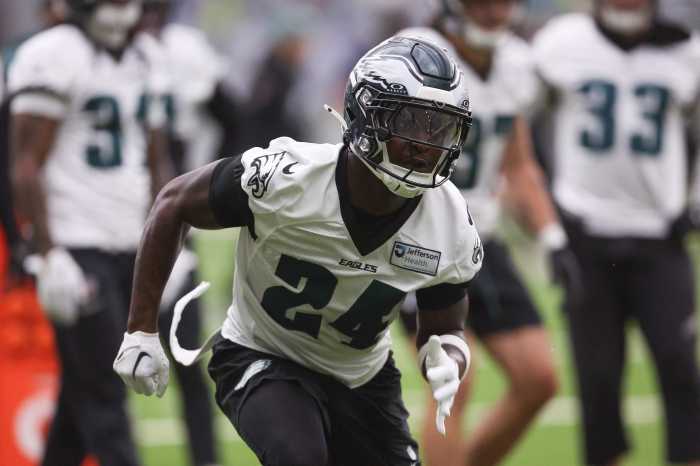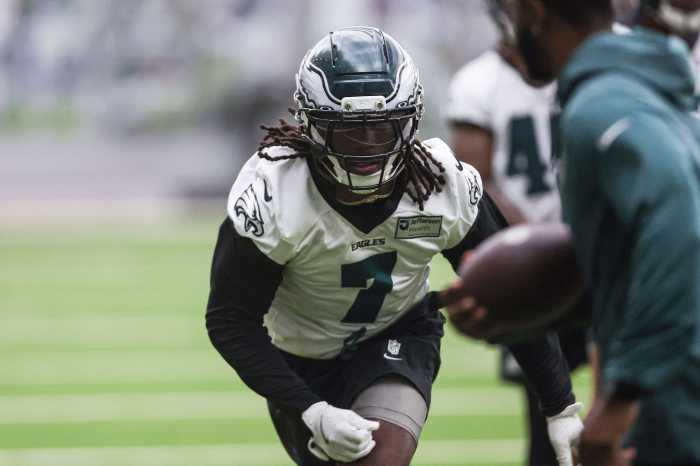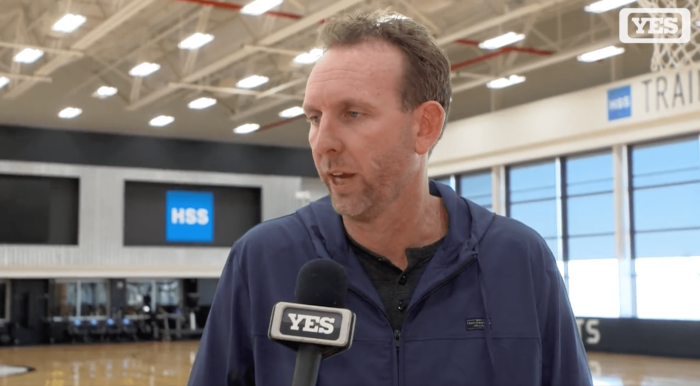Philadelphia Eagles general manager Howie Roseman hasn’t always had the greatest success rate in the NFL Draft. Yet in recent years, Roseman has excelled during the event while seemingly outsmarting the rest of the league. While it’s hard to pinpoint exactly how Roseman and the Eagles have had so much success in the NFL Draft in recent years, a shift in their usage of a specific metric could be involved.
Relative Athletic Score, more commonly known as RAS, is a metric created by Kent Lee Platte that he began developing in 2012. RAS utilizes both physical measurements and drill performances from the NFL Combine and Pro Days and simplifies them into a scale ranging from 0 to 10. If a player scores a 10, that would represent elite athleticism. While a score of 5 would represent an average performance.
The formula utilizes physical attributes and drills such as height, weight, arm length, hand size, 40-yard dash, vertical jump, bench press and shuttle drills. Each individual attribute or result is ranked relative to other players at the same position, thus creating the name of the metric. For example, a cornerback with a 40-yard dash in the 92nd percentile would score a 9.2 for that specific drill.
A necessary change for the Eagles

In recent years, RAS has taken social media by storm as many have utilized the popular metric to help them create their own evaluations of prospects in the NFL Draft. Yet it seems like the influences of RAS have also seeped into the NovaCare Complex as Roseman and the Eagles have placed an emphasis on drafting players with high Relative Athletic Scores.
Since 2020, Philadelphia has selected 40 total players in the NFL Draft. 25 of those players had a RAS of at least 8.00, which equates to 62.5% of Philadelphia’s total draft picks over their last five drafts. Yet that number increases significantly if you focus on what Roseman and the Eagles have done in the NFL Draft over the last three years.

Since 2022, Philadelphia has selected 21 total players in the NFL Draft. 17 of those players had a RAS of at least 8.00, which equates to a staggering 80.9% of Philadelphia’s total draft picks over their last three drafts. The only player that the Eagles selected that qualified for the RAS formula and scored below 8.00 was wide receiver Ainias Smith, who scored a 7.36. It’s also worth noting that Smith was recovering from an injury during the pre-draft process and was ultimately selected in the fifth round of the 2024 NFL Draft.
The three remaining players from Philadelphia’s draft classes since 2022 were Jalen Carter, Nakobe Dean and Jeremiah Trotter Jr., who didn’t qualify for the RAS formula due to a lack of testing results.
While RAS isn’t the only factor to utilize when evaluating potential prospects for the Eagles, it sure seems to be a strong indicator of Philadelphia’s potential interest in recent years. Since 2020, nine of Philadelphia’s 40 total draft picks qualified for the RAS formula and scored below 8.00:
- JaCoby Stevens, S (7.86)
- Shaun Bradley, LB (7.73)
- Quez Watkins, WR (7.40)
- Ainias Smith, WR (7.36)
- Patrick Johnson, EDGE (7.25)
- Marlon Tuipulotu, IDL (6.76)
- Jalen Reagor, WR (6.03)
- Kenneth Gainwell, RB (5.66)
- Tarron Jackson, EDGE (5.65)
Among those nine players that Philadelphia selected with an RAS below 8.00, Jalen Reagor was the only player that the Eagles picked before the fifth round in the NFL Draft. Ironically, Reagor is widely regarded as the biggest bust for the Eagles since 2020 and happens to be the only player that Philadelphia selected early in the NFL Draft with a poor RAS.
Now as we shift our focus towards the 2025 NFL Draft, it’s easy to see Philadelphia’s continued emphasis on players that have scored highly in RAS with the team’s reported top 30 visits. The Eagles have reportedly hosted 21 prospects on pre-draft visits thus far and here is how they performed in RAS:
- Jaydon Blue, RB, Texas (6.34)
- Anthony Belton, OL, North Carolina State (7.72)
- Charles Grant, OL, William & Mary (5.77)
- Donovan Jackson, OL, Ohio State (9.00)
- Josh Conerly Jr., OL, Oregon (8.84)
- Dylan Fairchild, OL, Georgia (N/A)
- Jalen Travis, OL, Iowa State (9.08)
- Marcus Mbow, OL, Purdue (N/A)
- T.J. Sanders, IDL, South Carolina (9.38)
- Shemar Turner, IDL, Texas A&M (N/A)
- Tyleik Williams, IDL, Ohio State (N/A)
- Elijah Roberts, IDL, SMU (6.84)
- Donovan Ezeiruaku, EDGE, Boston College (8.14)
- Oluwafemi Oladejo, EDGE, UCLA (N/A)
- Nic Scourton, EDGE, Texas A&M (N/A)
- Tyler Baron, EDGE, Miami (8.66)
- Maxwell Hairston, CB, Kentucky (9.63)
- Jacob Parrish, CB, Kansas State (8.82)
- Trey Amos, CB, Ole Miss (8.37)
- Jaylin Smith, CB, USC (4.82)
- Jaylen Reed, S, Penn State (9.08)
15 prospects out of the 21 reported prospects that have visited the Eagles qualified for the RAS formula ahead of the 2025 NFL Draft. 10 of those 15 prospects had an RAS of at least 8.00, which equates to 66.6% of Philadelphia’s pre-draft visits that qualified for the formula.
Only one player that has visited the Eagles this year has an RAS lower than Philadelphia’s current lowest mark for a drafted player since 2020, which is held by Tarron Jackson with a RAS of 5.65. That player is USC cornerback Jaylin Smith (4.82), who is projected to be selected on day three of the 2025 NFL Draft, which would fall in line with Philadelphia’s history of selecting players late in day three with a RAS under their potential threshold of 8.00.
As the 2025 NFL Draft quickly approaches, it’s certainly interesting to look back at a potential shift in philosophy for Roseman and the Eagles. It’s clear that Philadelphia has increased their emphasis on selecting players with a combination of impressive size and rare athleticism. Now we’ll just wait and see if this trend carries over into this year’s draft and the foreseeable future in the City of Brotherly Love.
Mandatory Credit: Tommy Gilligan-USA TODAY Sports




























